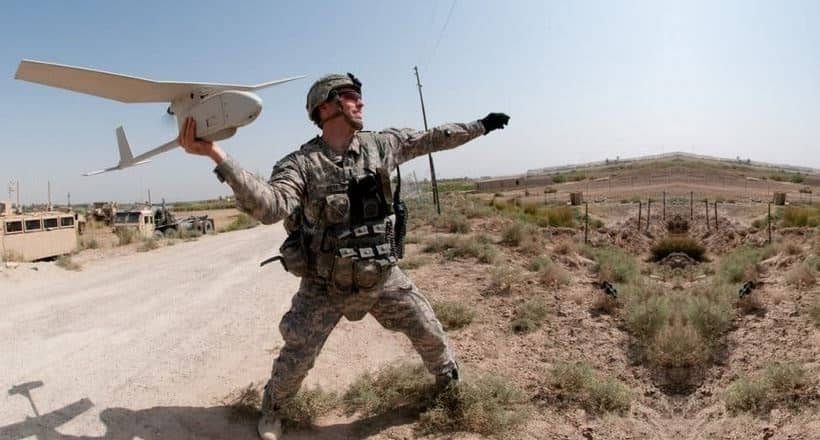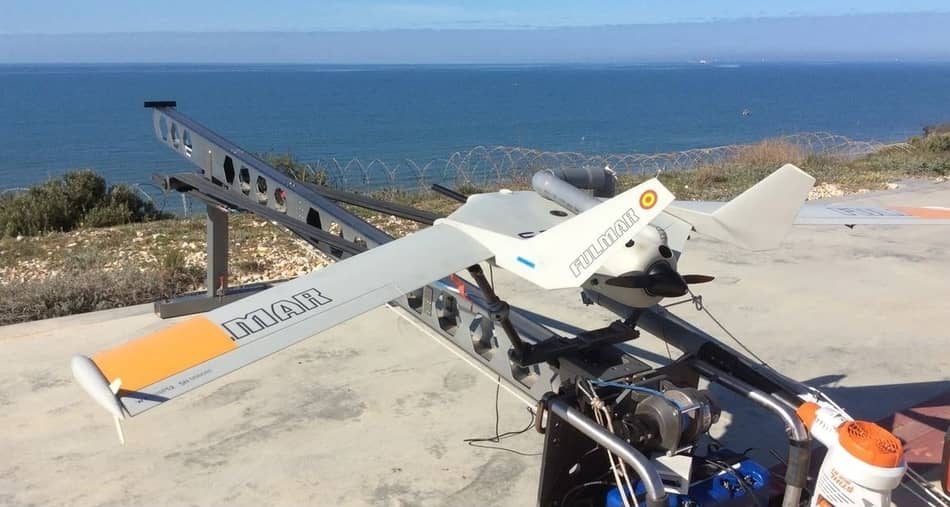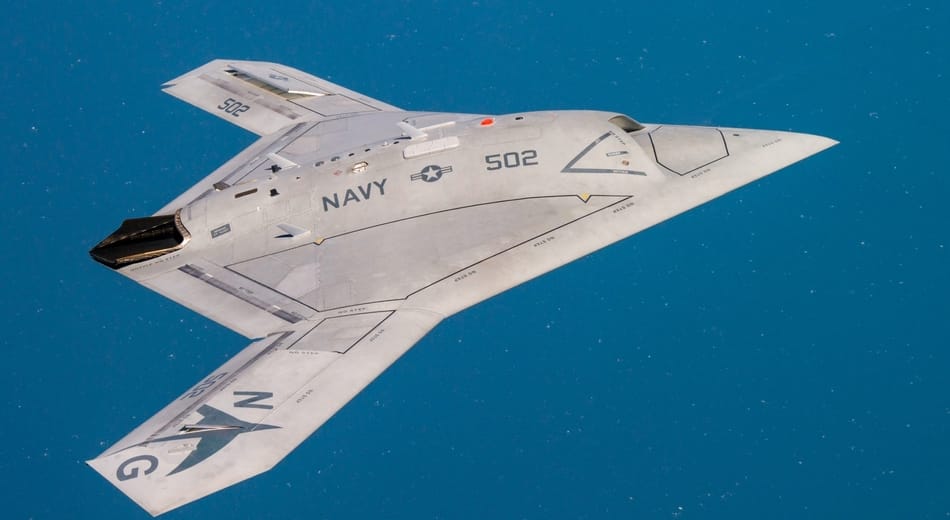Types of Military Drones: Best Technology Available Today

The military has been using drones for decades. These drones have been used to spy on enemies, deliver supplies, and even carry bombs. You may have seen them in the news or at an air show, but do you know what they really are and how they work? If not, we’re here to help by answering all your questions about military drones and their technology.
The drones were originally intended for military purposes, namely reconnaissance and espionage operations behind enemy lines. As time passed, the drones had a wider range of purposes within the army.
Later, they began to be used as targets for training military hunters; they found a purpose in the field of search and rescue and, as a result of evolution, began to be used in combat operations, which is still their main purpose within the military use.
The use of drones in the military has expanded rapidly today, and there are many different types of military drones that the army use. Those categories include small autonomous UAVs with pre-programmed flight plans or complex dynamic automation systems to more traditional manned aircraft without a pilot on board.
In fact, of all the uses we’ve seen so far, it’s drone technology that has really revolutionized how information are gathered and mapped out on battlefields across the world; reconnaissance missions would not go nearly as smoothly without them either.

But remember that drones are not used just for military operations anymore! They are being used as aerial photographers and cinematographers more often than they were before – though this isn’t even their most popular application today.
> Get Latest DJI Phantom 4 PRO HERE <
In this article we will explore these military drones based on their size, type and how they’re used by the army (or other armed forces), as well as any complexity factors beyond just flying them around autonomously for surveillance purposes. Let’s begin!
| Types of Military Drones | Weight: | Group Type: | Class (by NATO): |
|---|---|---|---|
| 1. Micro & Nano Drones | <19.8 lb (<9 kg) | RQ –11 Raven | Class I |
| 2. Small Tactical Drones | 19.8- 55 lb (9–25 kg) | ScanEagle | Class I |
| 3. Tactical Drones | 330-1322 lb (150-600 kg) | RQ –7 Shadow | Class II |
| 4. Strategic Endurance Drones | >1322 lb (>600 kg) | MQ –18 Predator | Class III |
| 5. Large Combat & Surveillance Drones | >1322 lb (>600 kg) | RQ –4BGlobal Hawk | Class III |
Related Article: How do Drones Work and What is Drone Technology
A Brief History Of Drones in Military Operations
The first drones were originally named for the sound they produce. At the time, they were creating a buzzing sound, which was quite deep and sometimes annoying. However, modern day drones are evolved but those original traits that made them called “drones” are barely noticeable anymore – this is why many people prefer calling them Unmanned Aerial Vehicles nowadays!
Unmanned aircraft idea was born during World War I when both the US and France joined forces and start working on developing an automatic airplane. The France was the first one who managed to develop this sort of technology.
Their first drone was called Voisin III biplane and could fly for about 62 miles (100 km) which even then wasn’t much at that time but still impressed other countries like Britain who didn’t really have anything similar in development until they started adapting airplanes as bombers later on in WWII.
During the World War II interest for UAVs have become popular. The bad turn of events necessitated the development of unmanned aerial vehicles not only because it would save lives, but also because they wanted to take away pilots from them. The first time drones without pilots were used in 1973 during the Vietnam War when a plane went down and no one perished due to this new technology.
A need for safer aircraft with less risk posed on humans drove development as well as public interest in these systems. This has led many companies like Parrot Drones that specializes exclusively in designing drones with HD cameras, GPS navigation system, autopilot mode – all built right into their quadricopter design!
If you are looking to buy a drone for personal use, be sure to check this model: DJI Phantom 4 Pro Plus V2.0

It’s clear that drones will continue to be a hot-button issue in military operations for the foreseeable future. But hey, we’re not here to debate it! Instead, let’s focus on outlining this awesome technology and its benefits.
Related Article: The History Of Drones (Timeline From 1907 To 2021)
It is undeniable that drone usage in military activities has been increasing exponentially over recent years–though there are still some issues of concern about how these unmanned aerial vehicles (UAVs) might affect international law or individual privacy rights. But drones could help save lives by providing surveillance as well detecting dangerous conditions before disaster strikes!
Categories of Military Drones

Drones that have found a purpose within military activities are divided into 3 categories: division by size (weight, range, speed), by operational functionality and by the level of their autonomy. According to size, the division of military drones in the US Army is governed by the NATO group. Their division sort by the group is as follows:
- Group 1: (Micro / Small Tactical Drones) are aircraft weighing from 9kg to 25kg and at speeds up to 460km/h; the representative is Boeing ScanEagle.
- Group 2: (Tactical drones) are aircraft with a mass of 150 kg to 600 kg and can also reach speeds of up to 460 km/h; the representative of the group is RQ –7 Shadow.
- Group 3: (Strategic penetrating drones) are aircraft of the highest class of categorization, their masses exceed 600 kg, and they can reach altitudes at levels higher than 5,500 m; the representative of the group is RQ-4 Global Hawk.
The following classes by NATO are:
1. Class I (< 330 lb or < 150 kg): Micro or Small Drones
There are many types of military drones that can be used in missions to perform Computerized Command, Control, Communication and information solutions. These drones can provide ISTAR (Intelligence Surveillance Target Acquisition and Reconnaissance).
Some examples include micro or mini size quadcopters which have advantages over larger UAVs for precision targeting as they fly at lower altitudes with more speed than the larger models. A example of a great micro drone in Class I is the Thales FULMAR fixed wing micro-UAV. It was developed by Thales and Wake engineering, with an endurance of 12 hours flight time and range up to 55 miles (90 km).

The Fulmar UAV can fly at speeds as fast as 100 km/h, has maximum altitude capabilities where they can reach 4000 meters, while carrying 8 kg worth of payloads – perfect for integration into solutions such as maritime surveillance or land border patrol monitoring systems!
The small catapult is used to launch this drone. This model has also the ability to land on water and has a very short deployment time of 30 minutes. I wrote an interesting article where you will find a lot of information about micro drones if you are interested: 10 Best Nano Drones. (these drones are used for commercial use)
> Get Latest DJI Mavic 3 PRO HERE <
2. Class II (330-1322 lb or 150-600 kg): Tactical Drones
The tactical UAVs are drones that are specially designed and used in the organic battalion level or in Special Forces. These UAVs help with medium range surveillance and they have a vital role filling the gap between short-range micro-UAVs and strategic drones, like MALE and HALE models.
They combine flexibility, endurance as well as ruggedness for this middle ground territory which has proven useful when doing situational analysis or awareness offsite from an area that is being observed by drone surveying techniques.

The Tactical Unmanned Aerial Vehicles (UAUVs) are specifically designed to be used for one of these two levels: The Organic Battalion Level or within special forces operations such as those undertaken by US Navy SEAL Teams.
Thales has been making significant advances in the field of military hardware, with their Watchkeeper being one example. This huge UAV is also able to fly around major cities and urban areas without issue thanks to it’s sophisticated technology- which makes us all a lot safer! The most advanced tactical ISTAR system on earth right now is Thales Watchkeeper.
3. Class III (>1322 lb or >600 kg): Strategic Drones
When it comes to Class III UAVs, they are usually referred to as MALE (Medium Altitude Long Endurance) systems. These drones can be used for surveillance and reconnaissance on a non-threatening area like the Middle East or Eastern Europe due to their long-range capabilities in these regions; they’re especially ideal because of how ground troops won’t have an easy time spotting them hovering above!

MALE drones have many applications. They can locate the enemy and track populations that are participating in nonviolent conflicts, for example, by compiling lists of targets. The General Atomics MQ-1 Predator is the most famous Class III UAV. Reaper and Predator models have state-of-the art infrastructure to help them carry out these tasks as efficiently as possible, while Anka and Heron work best when they’re closer to ground level because their sensors require more time before returning data than other models do.
Division of Military Drones Based on Their Functions
The division of military drones according to operational functionality, ie according to the role they “play” in military operations can be classified into 4 classes:
- Target Drones – serve as an exercise for military fighters in the air, and can also serve as an exercise for targets to soldiers on the ground, and represent enemy planes or bombs.
- Reconnaissance Drones – as the name suggests, they are drones used to spy on enemies.
- Combat Drones – are drones whose purpose is the destruction of enemy territory, infrastructure and other facilities.
- Drones For Research & Development – useful in further research of new technologies and their implementation in existing drones.
Also, take a look on this model if you are searching for a drone to buy: DJI Mini 3 Pro
Classification Based on Autonomy of The UAVs
Military UAVs could also be classified based on their autonomy. The early UAVs were controlled by humans that would sit in a chair and control the plane from the air. These planes had limited capabilities, which is why they weren’t called drones until more advanced versions came around with built-in controls to help stabilize speed or perform low-level functions such as navigation for example.
Early UAVs that were used by the army require a person to guide them through their mission, which is not what you would expect from an autonomous drone. With new developments in this category of autonomous systems for unmanned aerial vehicles (UAV), it’s no surprise they’ve been touted as something we can hope will be included in future designs!
The last division of military drones according to the degree of development and the implemented level of autonomy are recognized within 6 different classes:
- Drones for Route Optimization – these are UAVs that have the ability to decide how to follow the obtained route with one maneuver or shift.
- Drones with Combined Sensors – are aircrafts that perform operations using combined sensors implemented within the aircraft itself.
- Communication Drones – use high-quality technology with which they can perform communication and coordination between agents when using incomplete information.
- Drones with Task Scheduling Technology to Operators – operate depending on the event and depending on the limitation of equipment and time.
- Drones Capable of Route Planning – aircraft that have the ability to plan optimal routes for vehicles in the event that they encounter various obstacles on the planned route.
- Drones With Sensor Fusion – these types of military drones can combine informations from various different sensors.
Advantages of Autonomous Drone Technology
The level of autonomy that these UAVs are capable, opens the possibility for small, electrically powered drones to think like humans. This is similar to what happened in the 1980s and 1990 when many artificial intelligence systems were being developed across different fields with varying levels of success.
Now that technology has advanced so much, it seems natural that a drone can be made intelligent enough without human input or control because we are always ready for something new!
So the main goal of autonomous technology when it comes to drones is a functional system that will replace human pilots in the future. The future of autonomous drones in the military might be limited. However, there are still some factors that need to contribute to its growth such as technology and politics. The ethics behind using these types of systems should also consider how it impacts society at large when referring to military applications.
Main Purposes of Military Drones Today
In addition to the purposes mentioned in the previous paragraph, military drones may also be used for the following purposes:
- Radar interference,
- Hyperspectral scanning,
- Radar image creation,
- Carrying combat cargo,
- Communication relay,
- Electronic reconnaissance,
- Anti-electronic action,
- Laser illumination of targets,
- Mine detection,
- Detection of nuclear, chemical, and biological weapons,
- Close combat,
- Interception of other aircraft.
Popular Used Models of Drones For Military Purposes
1. RQ – 4A/B Global Hawk

RQ-4 Global Hawk belongs to the elite group of reconnaissance drones in the military world of the mentioned technology. The turbojet-powered drone, which can reach up to 635 km/h, weighs over 4 tons, has a range of up to 25,000 km, and have a flight time of 42 hours. This model represents a huge advantage for countries in military intelligence reconnaissance and espionage operations.
It provides an almost instantaneous high-resolution image of large parts of the territory captured by its state-of-the-art lenses and cameras. The first model was produced in August 2003. The prototype, made in 2001, went down in aviation history by operating a non-stop flight from Edwards, California to Edinburgh, Australia. It also set a world record, a 13,840-kilometer drone flight.
Six copies of the Global Hawk ATCD prototype model participated in the war in Afghanistan in 2002 and by 2003 had worked about 4,300 hours on the battlefield. Its highly developed recording technology and the installation of various hi-tech sensors provide the possibility of covering up to 100,000 km2 of terrain, at an altitude of 21,000 m within 24 hours.
It can be concluded that the Global Hawk was a kind of next-generation evolution in the field of drone development, overcoming barriers or limitations in the maximum range and endurance of drones.
2. Heron TP Eitan

Heron is a product of the strong and world-famous Israeli drone industry. This military type drone was manufactured at the Israel Aerospace Industries factory. Operated by two ground operators using a remote control, the Heron was once one of the world’s most reliable and sought-after military drones. With features like a flight-controlled aircraft, Heron looks impressive on paper.
Its hull length is 8.5 m with a span of 16.6 m and the 1,150 kg mass engine achieves a speed of 207 km/h powered by a 200 diesel horsepower engine. Its range is 350 km, and the persistence of an impressive 52 hours of uninterrupted flight.
He made his first flight back in 1994 and is still in active service around the world. They are still primarily used by the military air services of Israel, India, Brazil, Turkey, and many others.
Heron Eitan was used for multiple military purposes during his service, from reconnaissance and surveillance of the terrain, gathering information or spying, searching for and destroying certain targets on the battlefield, through defense against missile attacks.
3. Schiebel Camcopter S-100

Camcopter S-100 is a drone powered by a rotary propeller, with autonomous functions, with its design and drive reminiscent of modern helicopters. Manufactured in Austria by the Austrian company Schiebel Corporation, the Camcopter has found its purpose in many different operations around the world.
They started with manufacturing this model in the early 2000s by order of the military services of the United Arab Emirates and the German Navy, it soon found its place in the very elite of modern drones.
Classified as a medium-range and high-altitude drone, it was used in military operations of various types. It has found use in general surveillance of terrain and state borders, fire surveillance and control, assessing damage to infrastructure, detecting minefields, and other similar purposes.
4. General Atomics MQ-9 Reaper

One of the most efficient and deadly drones popularly known as Predator was manufactured by the General Atomics Aeronautical Systems Corporation based in the United States. The Predator is a provision fighter designed with a performance that allows it to last longer and achieve higher altitudes when surveillance than its then competitors in the market.
The first prototype was made in 2001 when the first flight was made. The predator was primarily designed for reconnaissance and surveillance, greatly aided by the highly developed technology of various sensors implemented inside the aircraft, such as a thermographic camera for night vision.
5. Northrop Grumman X-47B

The X-47B UCAS-D is currently one of the most modern and technologically advanced combat drones in the world of military drone technology. It was subjected to various tests before being put into operation in 2019. The X-47B is a drone with an autonomous control function without a repatriate, powered by a jet engine that provides it with top performance.
The first successful test flight took place in February 2011 at Edwards Air Force Base in California, USA. The X-47B technology development program initially cost $636 million, but the program’s budget increased to approximately $813 million due to additional demonstrations.
The X-47B is a demonstration model of the drone that the US military plans to upgrade to the factory model X-47C, which will go into series production. The Americans continue the tradition of dominating the development and production of high-tech drones whose primary purpose is the military. The best example of this is the X-47B.
Military Drone Technology
It is estimated that the global military drone market size will reach $23.78 billion by 2027 as drones have become a primary tool used in today’s world for combat, research and development, target decoys, or supervision purposes.
A single US Predator drone can cost more than 4 million dollars depending on its specifications making it one of the most expensive items to be found among other inventory within any given army unit which explains why their usage tends to come with larger increments from time to time according to data retrieved from Globe Newswire sources.
What Is The Future For Military Drones?
The US military is ending the use of some drone models from the past. The Predator has stopped being used for operations, and the Reaper will be phased out sooner than expected because they’re getting old and future wars may not resemble recent American conflicts. That’s partly because the technology that was used in that drones is getting old, and for a reason, because future wars may be very different from recent.
It is assumed that in the future, drones will be used for military purposes for reconnaissance and espionage. Technology has advanced a lot and big models are no longer needed. But time will tell.
Conclusion
Drones are a growing field in the military because they enable high-profile missions to be executed with little risk. They also have no casualties which are convenient and prove quite useful when carrying out operations across the world.
It is hard to believe that the first drones were used for only one reason- war. They are now widely considered as a vital tool in many fields, ranging from law enforcement and environmental management all the way to rec reational use by average consumers!
Military drones were seen in Iraq with their ability to provide aerial intelligence for military personnel on the go. UAVs have been used by both CIA agents and Russian protesters alike because it’s easy to spy without leaving any traces behind. This has caused quite an uproar about how dangerous they could be if misused or taken over by hackers.
The political factors surrounding whether there should be more restrictions against drone usage will always remain hotly debated. As you saw throughout this article, there are many types of military drones and most often, their separation is based on weight, control range as well as endurance. Military UAVs can also be classified by the kind of operation they perform. You can see here the 10 best military drones in the world.
So, what are some of the technological challenges that need to be solved before drones can become smart enough on their own? Well, first and foremost is stability. For example, how do you keep a drone from crashing into something while it’s flying around and collecting information?
The problem with this question isn’t just about human safety but also has implications for military applications where human lives depend on accuracy in reconnaissance missions.
I hope you learned everything about military drones and their technology in this article. If you have questions, feel free to write.


